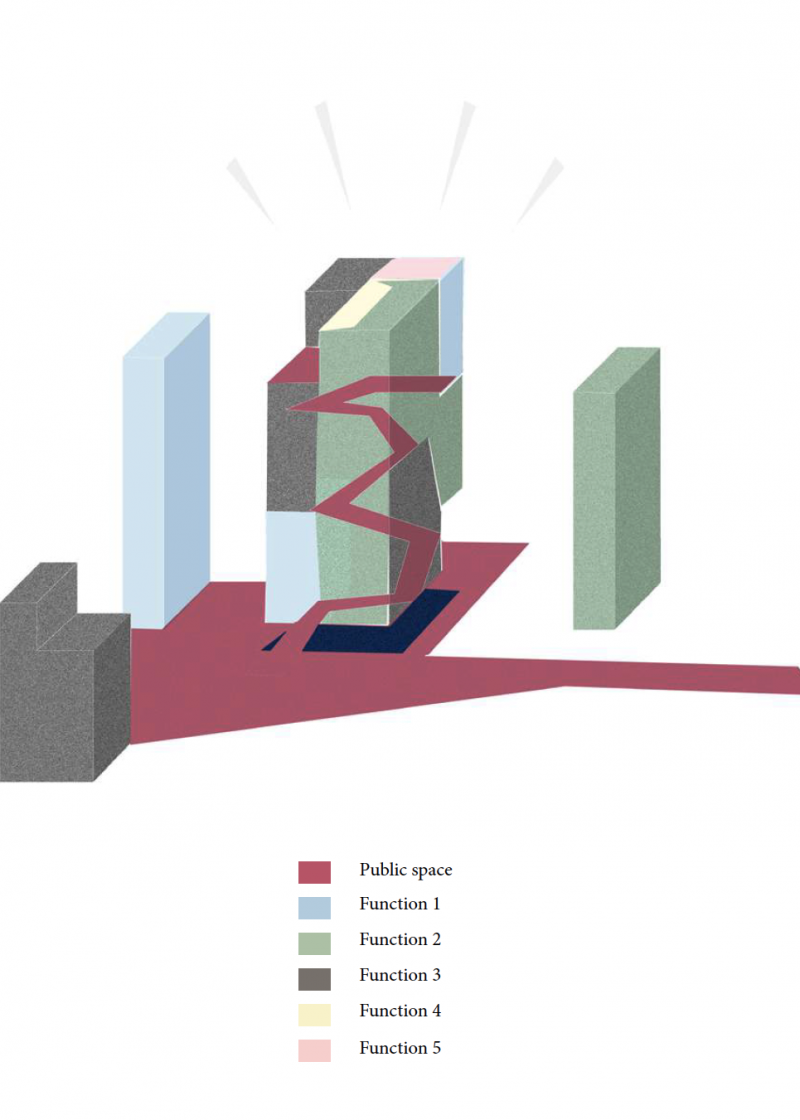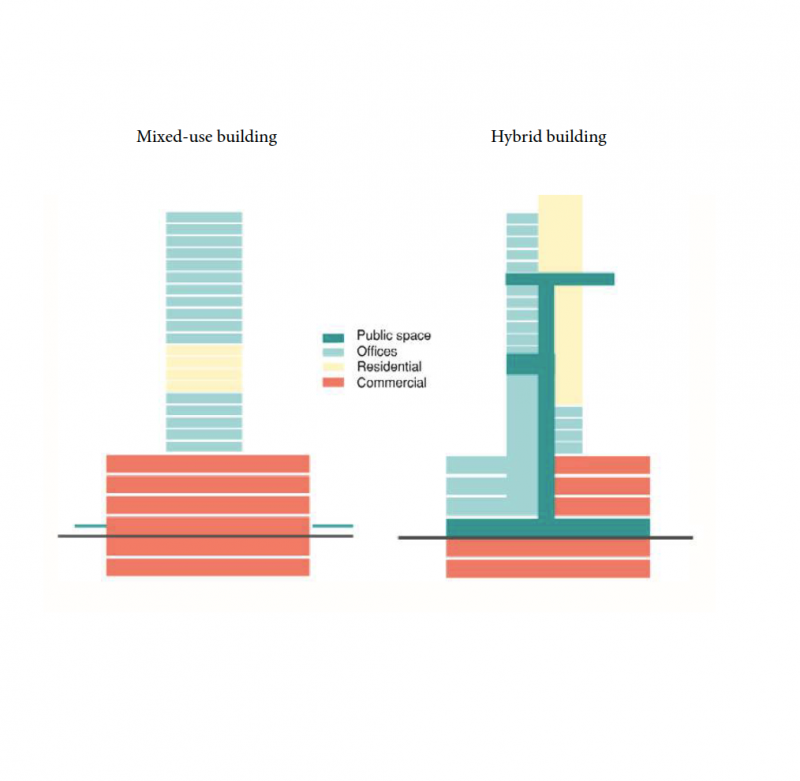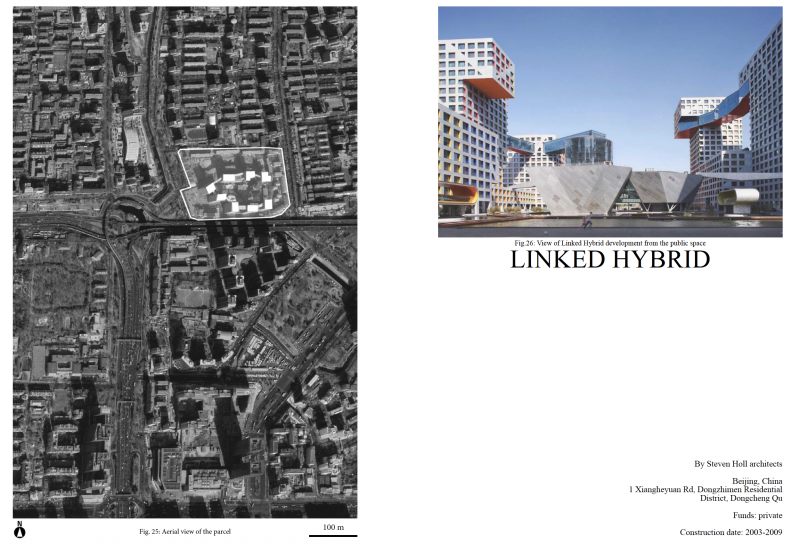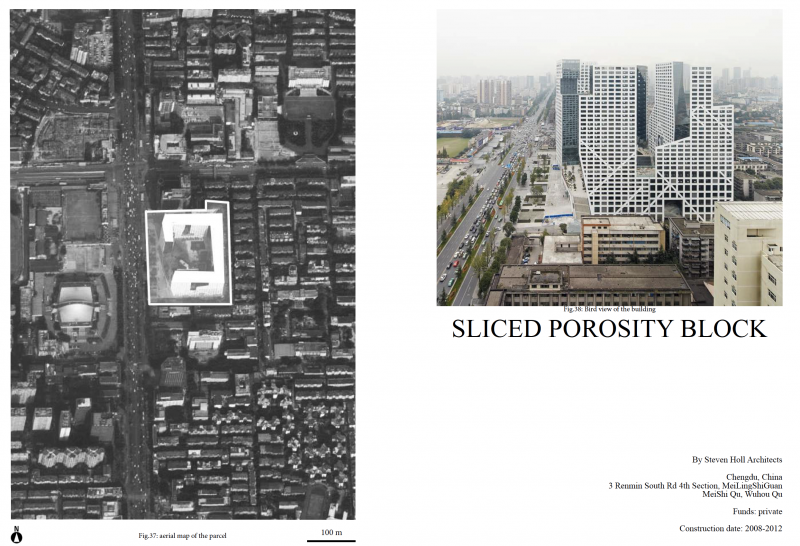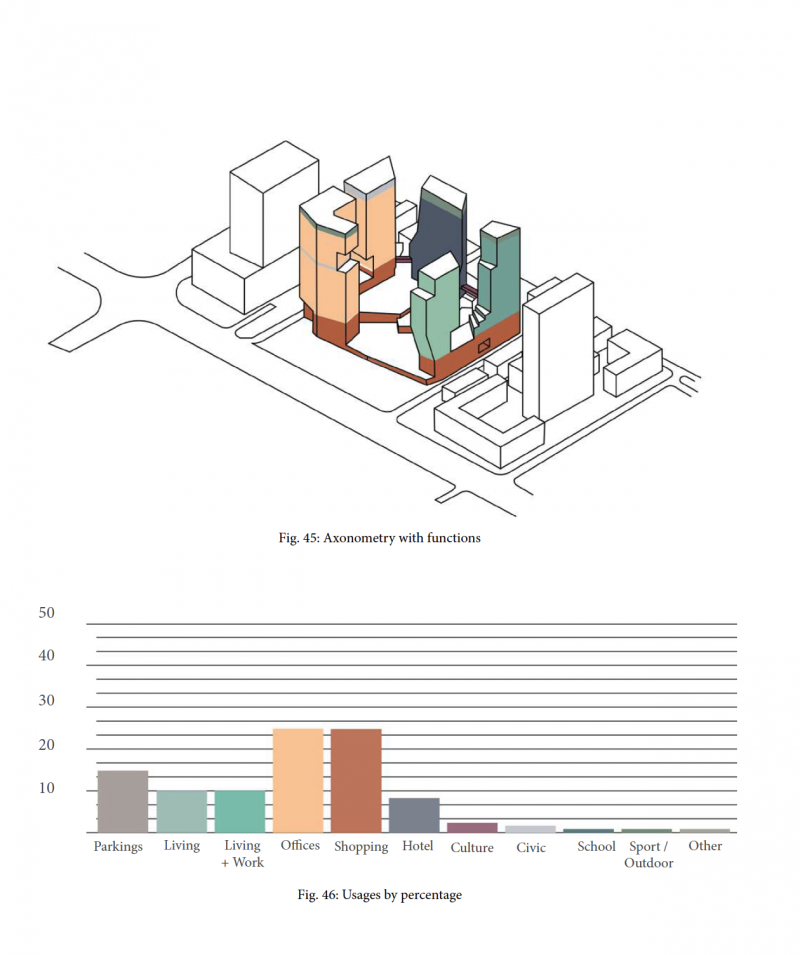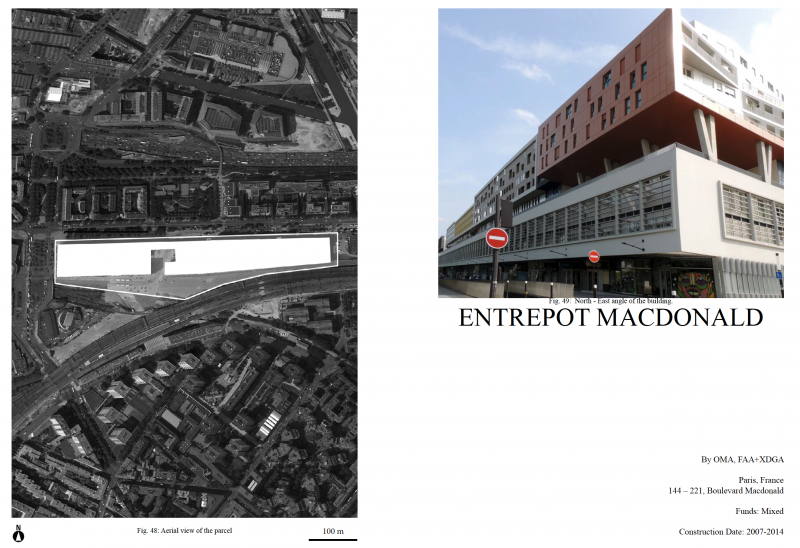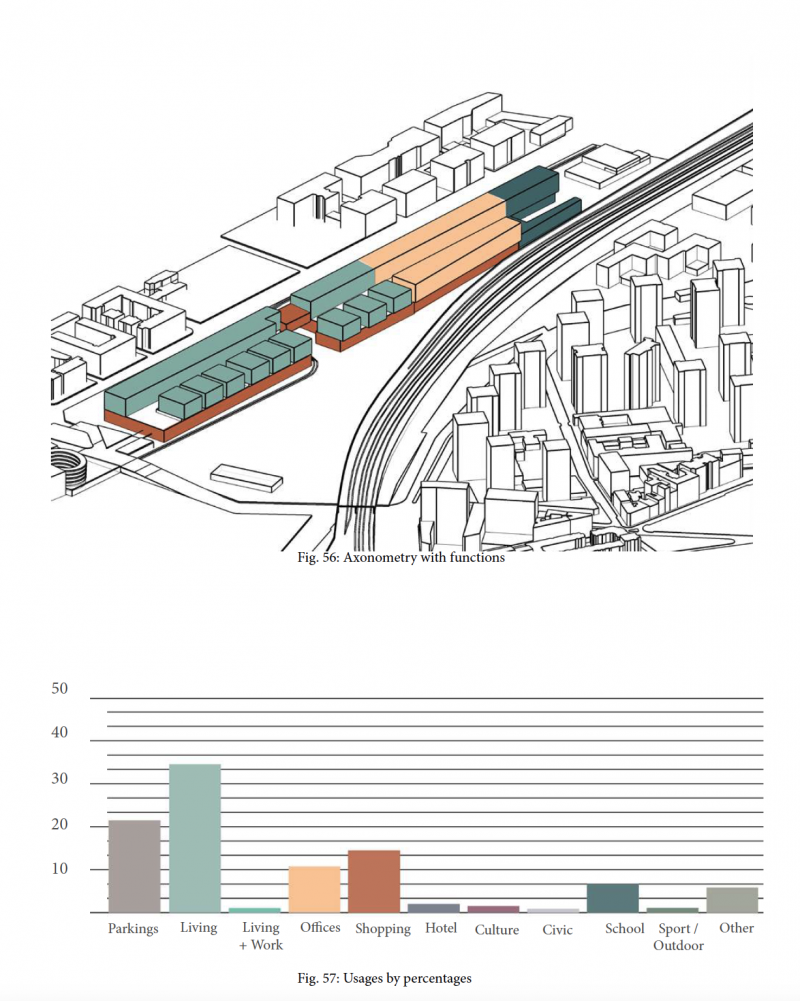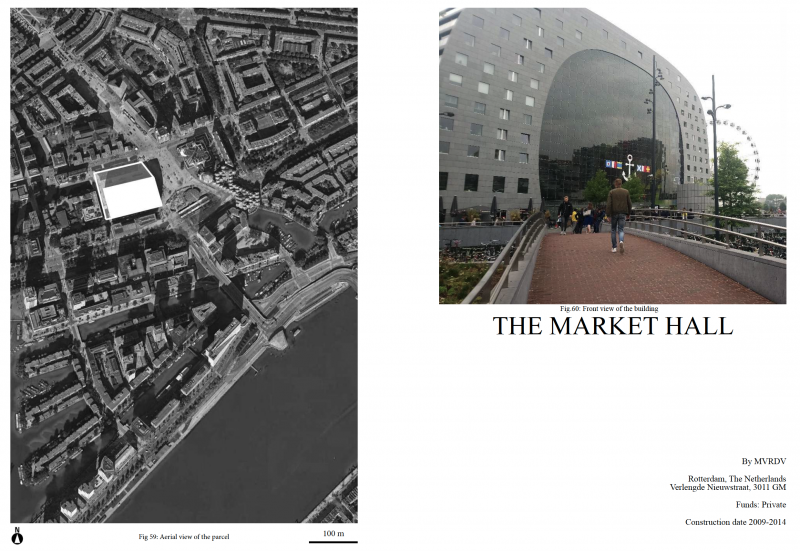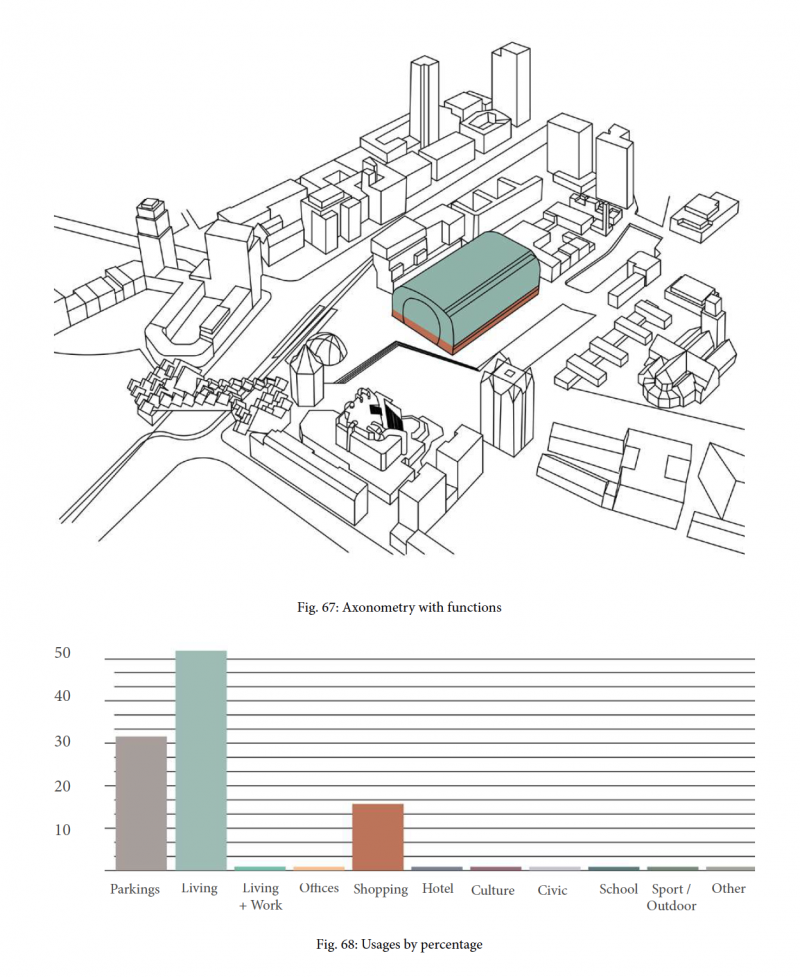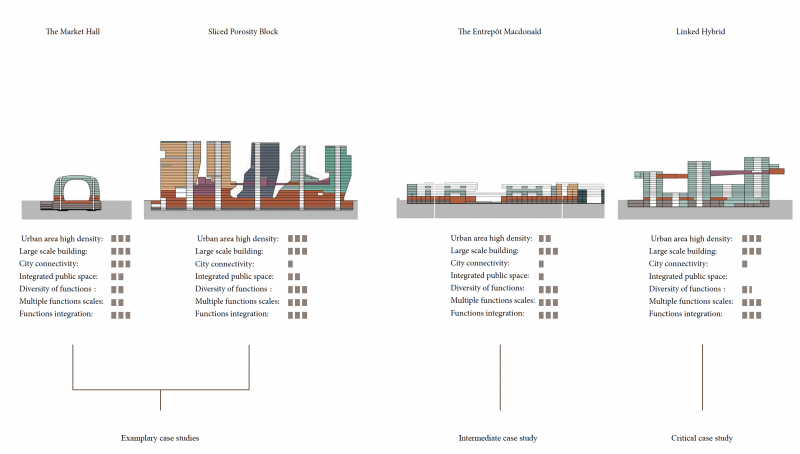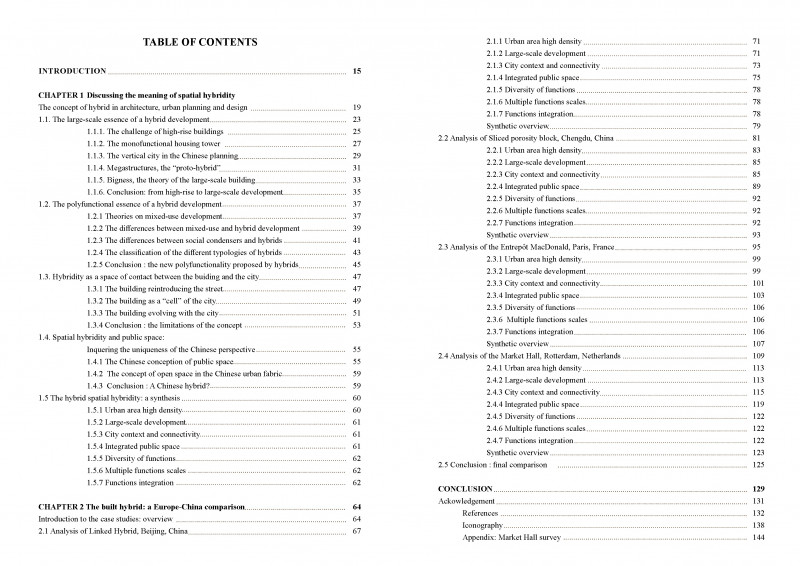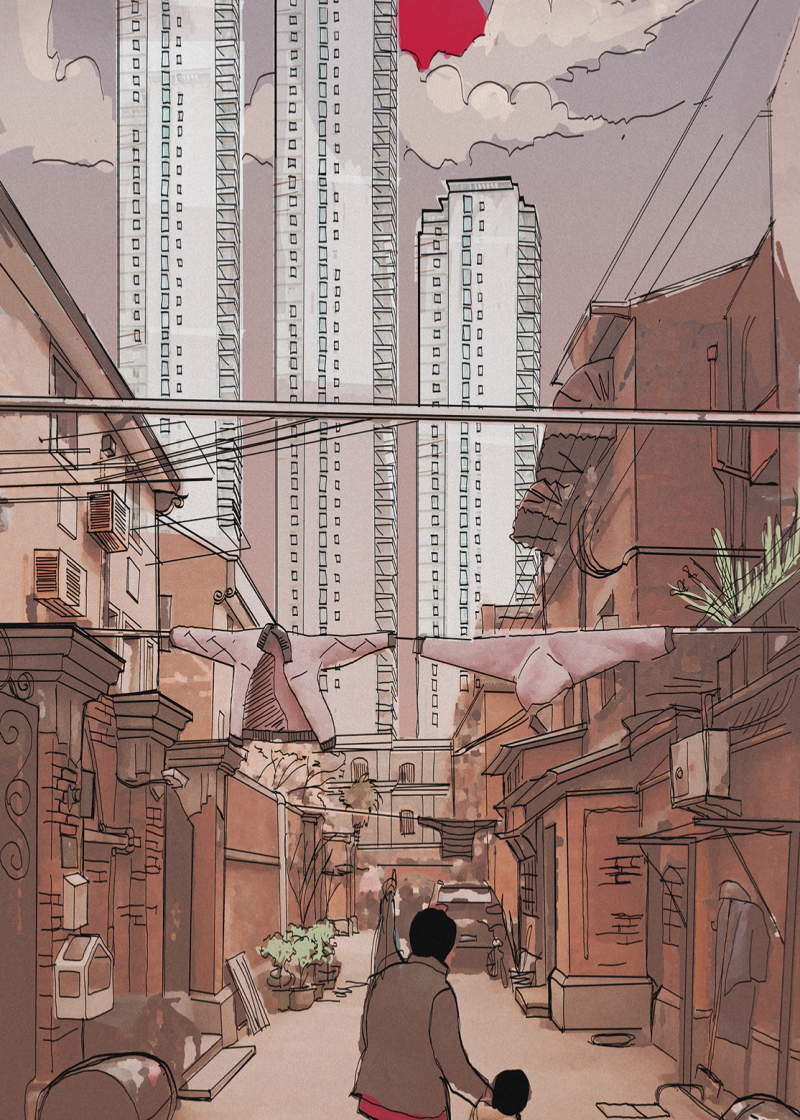Hybrid Urban Developments
The thematic of hybrid buildings or developments has become increasingly popular those last years. Born in the metropolitan area, this new typology reunites different functions within the realm of one building or development in an innovative way. Theoretically, it aims at reintroducing the realm of the public space within the building. Public and private functions are combined within one citylike development. The purpose of this thesis is to question the functioning of these developments both in Europe and in China. We raise the question of the discrepancy between theory and practice.
The thesis is divided in two main part. The theoretical part aims at exploring the essence of the hybrid through different themes and to draw a set of spatial qualities that defined a hybrid development.
Using this set of qualities, we analysed four cases studies in the second part, including Sliced Porosity Block in Chengdu, Linked Hybrid in Beijing, Entrepôt MacDonald in Paris as well as the Market Hall in Rotterdam. The method includes field work as well as analytical drawings.
The results of the research have shown that current hybrid developments are difficult to establish, and their functioning are still inhibited overtime. The general observation is that actual hybrids are conceived as traditional developments: the connection with the urban fabric is limited which inhibit the "synergy" of functions the hybrid aims at. Furthermore, the cultural dichotomy between private and public realms hinders the development of hybrids in China. However, the concept can still evolve. Potential areas of improvement include the combination of urban transportations and hybrid, as well as the cultural adaptation of the public space proposed.




